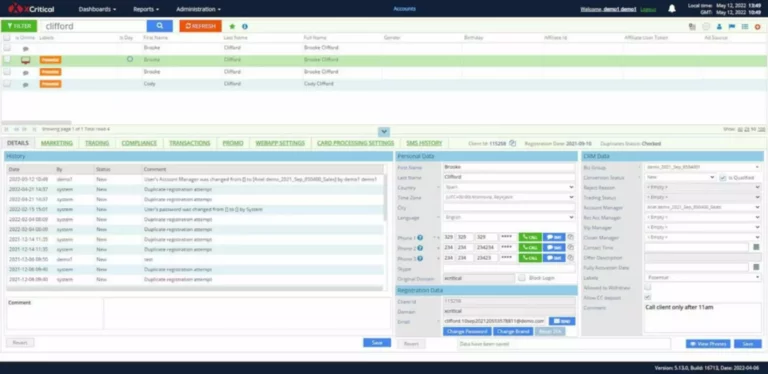Content
Filing Form ADV is a critical part of this process, as it outlines the RIA’s business, fees, and potential conflicts of interest. Both RIAs and broker-dealers must navigate distinct licensing and registration processes to operate legally and meet regulatory standards. While RIAs focus on advisory qualifications and disclosure filings, broker-dealers must adhere to stringent FINRA and SEC requirements. The nature of client relationships differs significantly between RIAs and broker-dealers, reflecting their distinct roles in the financial services industry. Some financial professionals operate as both RIAs and broker-dealers, allowing them to provide fee-based advisory services while also earning commissions for product clearing firm sales.
Trade Confirmation and Matching
Acting as the middleman, they ensure the delivery of shares to the buyer and delivery of funds to the seller, bearing the risk if either side reneges. They are in charge of matching the buyer and seller, processing, and reconciling the transaction. Even before placing a trade, you would have to find a way to confirm that the seller actually owned the shares, and they would need to confirm you actually have the funds to pay for them. Once the transaction and price were agreed upon, you would have to physically exchange the money for the stock certificates to consummate the trade. If you send a check, you might have to wait five business days for funds to clear before the shares were delivered to you. forex crm Of course, if you have cold hard cash and are willing to meet with the seller physically, you could expedite this part.
Which of these is most important for your financial advisor to have?

Artificial intelligence (AI) and machine learning (ML) are increasingly being integrated into broker-dealer platforms to enhance trading strategies, improve https://www.xcritical.com/ risk management, and optimize client services. These technologies enable broker-dealers to analyze large data sets, predict market trends, and automate decision-making processes. These services involve the clearing firm taking on the central counterparty role, ensuring that all transactions are clear and that certificates are issued to the buyer and seller.
What Is the Difference Between a Broker and a Clearing House?
These are literally vertically integrated financial institutions that have the resources to handle the time consuming back office roles and responsibilities to settle trades. From access to the markets and trade initiation through the settlement and clearing process, it’s all processed under one roof resulting in more efficient completion. A self-clearing broker can provide many benefits to its customers with all the resources and processes in house. As mentioned before, clearing firms process and clear trades through central clearing houses and companies. To cover the costs of this process, clearing brokers charge a clearing fee, which is charged per transaction. Clearing firms consider several factors when calculating the exact amount of the payment.
In a fee-only arrangement, RIAs charge clients a percentage of assets under management, hourly fees, or flat rates for their advisory services. RIAs with assets under management (AUM) exceeding $100 million must register with the Securities and Exchange Commission (SEC), though certain exceptions apply. RIAs managing less than $100 million typically register with state securities regulators unless they meet specific criteria (e.g., having clients in multiple states, which could trigger SEC registration). Choosing between an RIA vs. broker-dealer model is an important decision for financial professionals and investors alike.
They usually work with registered investment advisors or RIAs to secure and protect the assets of the client for whom the RIA invests. One of these services is related to asset custody, which makes prime brokers similar to custodians to an extent. A clearing broker, also known as a clearing firm, is a middleman between investors and large corporations, such as clearing companies or clearing houses. These clearing firms and services are responsible for the smooth operation of financial markets, such as forex, and handle the transaction confirmation, settlement, and delivery of trades on behalf of clients.
All of this may sound somewhat dry or technical – but make no mistake, without clearing firms doing their job behind the scenes, our entire financial system would be at risk. But one group that often goes unnoticed – despite playing an essential role in keeping everything running smoothly – is clearing firms. Suppose that Melissa – a savvy trader – sells 10 shares of Apple for $1,000 on an exchange, while John buys 10 shares for $1,000. Instead, the clearinghouse collects $1,000 from John’s account and places it into Melissa’s account. At the same time, the intermediary makes sure that the 10 shares from Melissa are successfully transferred to John. These prime brokers typically work with structures and synthetic financial instruments, which are created to imitate specific financial instruments while making changes in key characteristics.
By providing oversight and implementing regulatory measures, they help maintain market stability while protecting investors’ interests. Short selling is a trading strategy that involves borrowing shares from a broker and selling them with the hope of buying them back at a lower price to make a profit. By understanding these differences, you can ensure that your assets are properly protected and that your trades are executed correctly.
11 Financial’s website is limited to the dissemination of general information pertaining to its advisory services, together with access to additional investment-related information, publications, and links. Clearing firms may explore new technologies, such as DLT and artificial intelligence, to improve efficiency and reduce costs. They may also develop new products and services, such as real-time clearing and settlement. Clearing firms are subject to oversight by a range of regulatory bodies, including the Securities and Exchange Commission (SEC) and the Commodity Futures Trading Commission (CFTC) in the United States. Clearing firms are also vulnerable to cyber attacks and data breaches, which can compromise the security and integrity of their systems and the markets they operate in. Clearing brokers themselves are employees of an exchange, and as such as paid to facilitate trading and order settlement between those requesting, or placing, the trade and the exchange.
- Although both terms are commonly used in the financial industry, they differ in terms of the services they offer, clientele, and primary focus.
- Doing so allows the hedge fund’s assets to be quickly shifted to the prime broker as collateral.
- Third, the amendments will require broker-dealers to check a box to indicate whether they are subject to the 2% debit reduction or the 3% debit reduction.
- Having end-to-end trade clearing in-house naturally provides more control for the broker.
- As a result, custodians are almost always sizable firms with a proven reputation for unparalleled security.
These fees cover the costs of maintaining custody accounts, providing secure storage facilities, and administering asset transfers. Custody fees are more often calculated on a periodic basis, such as monthly or annually. They may also be calculated as a percentage of the total value of assets under custody.

While errors with trade settlements are rare, it’s good to know any problems can be handled quickly and efficiently under one roof. This is great for customers as there is complete accountability in a one-stop shop model without having to work through layers of middlemen. Brokers that cater to specific types of customers like active traders further elevated their value since more trades means more clearing with a single point of contact for the customer and back office. If the trade fails for any reason, the clearing firm is responsible for paying the counterparty to settle the trade and help maintain a smooth marketplace. It’s rare for a trade to fail since the broker is responsible for making sure the buyer has the funds to complete the transaction and the seller has ownership. The clearing firm is responsible for the delivery of the security and reporting the data of the trade.
There’s also the risk of not receiving your stock certificates if the seller decides to renege on the trade (i.e. stock spikes much higher, seller decides to keep the stock). Don’t forget about registering that transaction with the exchanges and the DTCC to accurately record the new owner of the shares. When you’re ready to sell the shares, just repeat the whole process on the other side as a seller.
These services include capital introduction, research and analysis, and regulatory advice. As the name suggests, executing brokers are responsible for executing trades on behalf of other traders and investors. Executing brokers offer their services to retail and institutional traders and investors. Although they’re viewed as a type of clearing firm themselves, executing brokers usually rely on services provided by a third-party clearing broker (like general clearing members) to facilitate post-trade processing. Clearing/carrying broker-dealers subject to the amendments will be determined based on the average of the broker-dealer’s credit balances for the 12 months ending June 30, 2025. Broker-dealer platforms are a crucial component of the financial services industry, providing essential services for investors, traders, and other participants in the market.
Once beta testing is complete, the on-boarding and ‘go-live’ process will begin end of September 2020. The Direct Access Software web site permits users to obtain access to information about DAS and its products. In providing this access, DAS recognizes the principles of privacy of personal information. While both options have their advantages and disadvantages, many institutions are turning to outsourcing as a way to streamline their operations and reduce costs.
